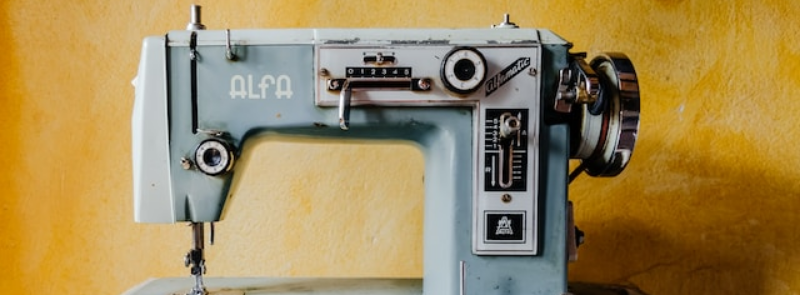
When It Occurs
Every June 13th
Timeline
Days Passed (930)
# Hashtags
#NationalSewingMachineDay #StitchingFashion
Every June 13th, National Sewing Machine Day pays tribute to an invention that has kept us in stitches for over 150 years. Before the sewing machine, tailors and sewists crafted clothing painstakingly by hand, one stitch at a time. The introduction of the sewing machine brought about a revolutionary change, not only propelling the entire industry forward but also altering our perception of the garments we wore.
History of the Sewing Machine
The sewing machine was a groundbreaking invention in the 19th century, allowing for faster, more efficient stitching compared to hand sewing. Although several inventors contributed to its development, Isaac Singer is widely credited with popularizing the modern sewing machine in 1851, when he designed a model that became commercially successful.
Some key figures in the history of the sewing machine include:
- Thomas Saint: Credited with designing the first sewing machine patent in 1790, though his design was never successfully built.
- Elias Howe: An American inventor who patented the first functional sewing machine in 1846, which could produce lockstitch sewing.
- Isaac Merritt Singer: Developed an improved sewing machine with a straight needle and a foot pedal, making it easier to use.
The sewing machine drastically changed the way clothing was produced, moving away from the labor-intensive process of hand stitching to a much faster, mechanized system.
Significance of National Sewing Machine Day
National Sewing Machine Day celebrates the role this invention plays in the fashion industry, the crafting community, and everyday life. It encourages people to appreciate the technology that allows for the creation and repair of garments, home furnishings, and other textile-based goods. Additionally, the day highlights the following key aspects:
- Accessibility: The sewing machine made it possible for people to sew and repair clothing at home, contributing to household savings and self-sufficiency.
- Creativity: For many, sewing is a form of creative expression. Hobbyists and fashion designers use sewing machines to bring their ideas to life, from creating intricate designs to producing wearable art.
- Sustainability: In recent years, there has been a push towards sustainability in fashion. Learning to sew allows individuals to repair, upcycle, and customize clothing, reducing waste and contributing to a more eco-friendly lifestyle.
- Economic Impact: The sewing machine played a crucial role in the Industrial Revolution, particularly in the textile industry. It sped up production times and allowed for mass production of clothing, making fashion more accessible to people of all classes.
How National Sewing Machine Day is Celebrated
People across the UK celebrate National Sewing Machine Day in a variety of ways, from workshops and sewing classes to personal sewing projects. Here are some common ways to observe the day:
-
Sewing Workshops and Classes: Craft shops, fabric stores, and community centers may offer special workshops where beginners can learn to sew or improve their skills. These events often focus on making small projects, like bags, clothing items, or home décor.
-
Special Sewing Projects: Many individuals take the opportunity to start or finish sewing projects they’ve been working on. These projects can range from creating clothing to making quilts or home accessories. Some may challenge themselves to learn new techniques, like embroidery, appliqué, or patchwork.
-
Sewing Machine Maintenance: National Sewing Machine Day is also a good time to give your sewing machine some attention. Regular cleaning, oiling, and maintenance ensure that it runs smoothly and prolongs its lifespan.
-
Sewing Groups: Social media platforms often host sewing groups where enthusiasts share their latest creations, tips, and tutorials. National Sewing Machine Day is a perfect time for people to showcase their work and inspire others.
-
Upcycling and Sustainable Sewing: Many people use this day to focus on sustainability by upcycling old clothes or textiles into new items. This not only encourages creativity but also helps reduce textile waste and promotes a more environmentally-friendly approach to fashion.
-
Sewing Competitions and Challenges: Online communities and local sewing groups may hold friendly competitions or challenges on National Sewing Machine Day. Participants might be tasked with creating a specific type of garment, using only certain materials, or completing a project in a set time frame.
The Role of Sewing Machines Today
In today’s world, sewing machines are used for both personal and industrial purposes. Home sewing machines have become increasingly user-friendly, with a variety of features to accommodate different sewing needs—from basic stitching to more advanced techniques like monogramming and embroidery. Industrial sewing machines are crucial in the mass production of textiles, ensuring precision and efficiency in large-scale manufacturing.
Additionally, the rise of the DIY (Do It Yourself) movement and the focus on slow fashion have brought a renewed interest in sewing at home. People are increasingly turning to sewing to make their own clothes, alter existing ones, and create unique items that align with their personal style or ethical values.
Importance for the Fashion and Crafting Industries
Sewing machines are central to the fashion industry, allowing designers to prototype garments quickly and bring their ideas to life. For the crafting community, sewing machines are a tool of creativity, enabling the production of everything from garments to quilts and decorative home items. In the UK, sewing also plays a role in promoting craftsmanship and skill development, with a focus on both traditional and modern techniques.
Conclusion
National Sewing Machine Day in the United Kingdom is a celebration of one of the most important inventions in the textile industry. Whether used by professional designers, hobbyists, or home sewers, the sewing machine remains a versatile and valuable tool for creativity, sustainability, and functionality. On June 13th, sewing enthusiasts across the UK come together to honor the sewing machine’s contribution to their lives, the fashion industry, and society at large.


